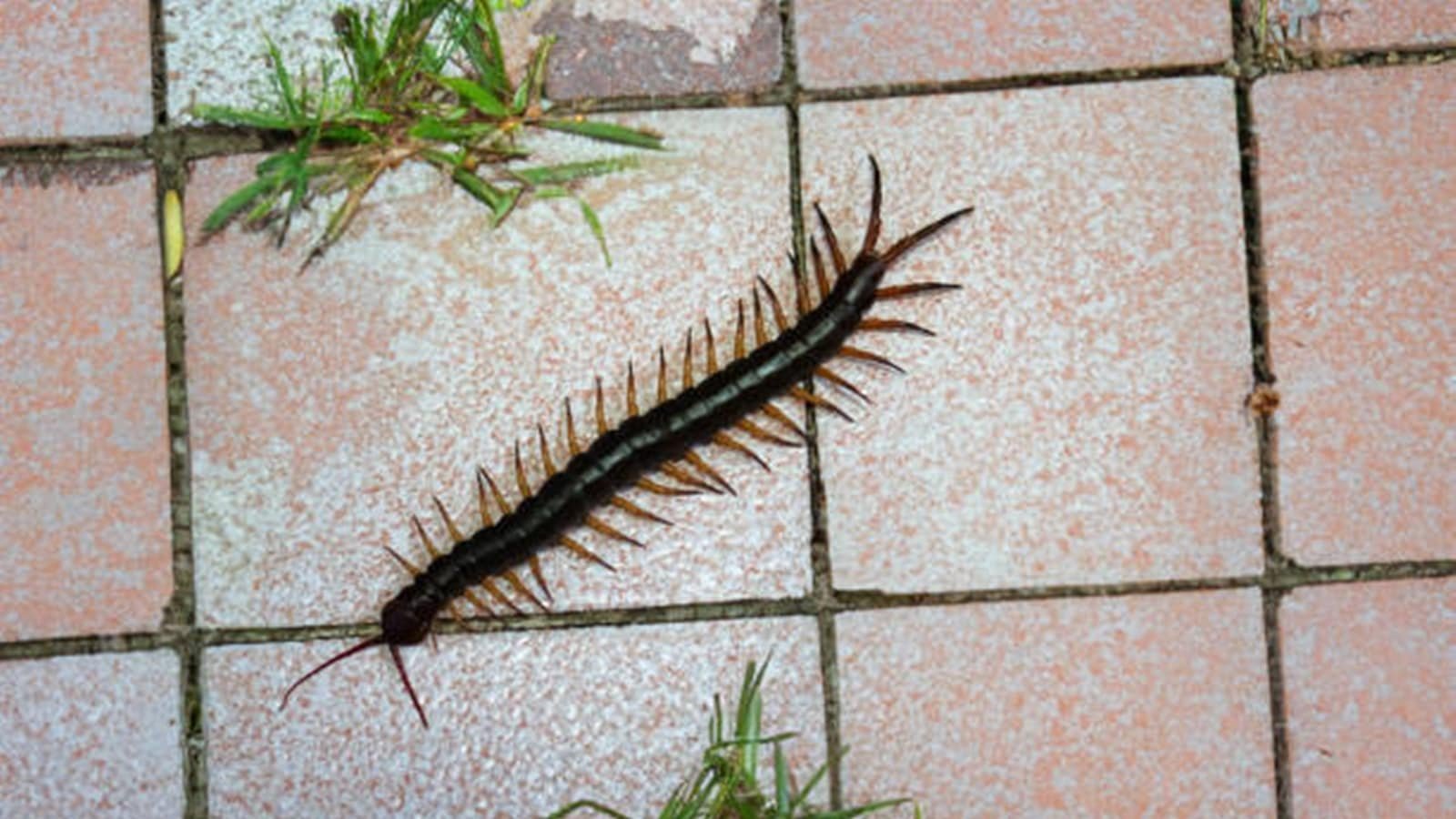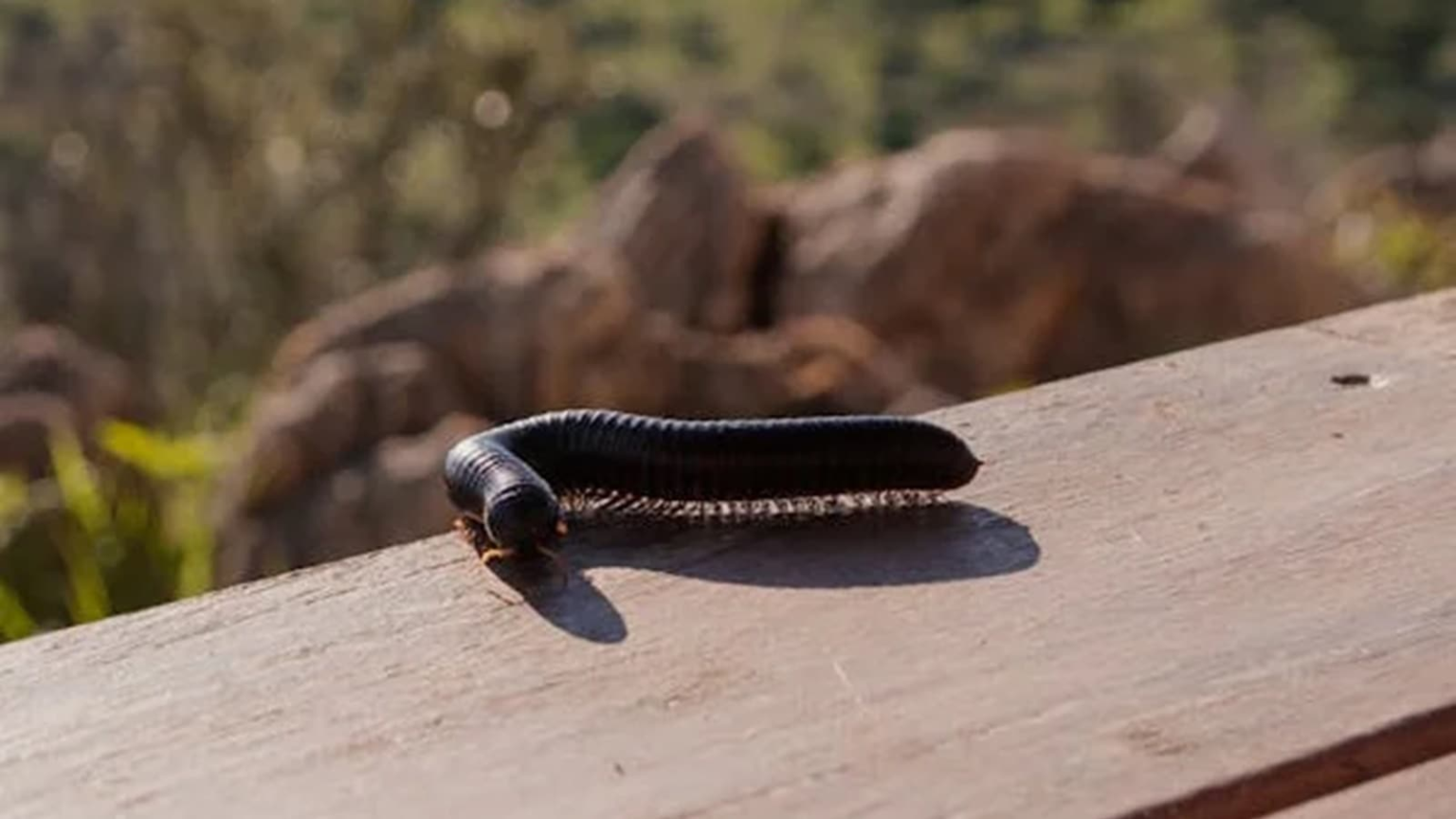Centipedes are elongated, segmented (metameric) animals with one pair of legs per body segment. These writhing creatures derive their name from the fact that they have a hundred feet. These insects are venomous, and their bites can inflict painful stings on humans.
According to Healthline, centipede bites are generally not harmful to human adults but can cause discomfort. The venom of most centipedes is not potent enough to cause serious harm to us; however, the bite may cause mild pain, swelling, and redness at the site. In rare cases, some individuals might experience an allergic reaction, such as severe swelling, hives, or difficulty breathing, which would require medical attention.
If you find these tiny creatures scurrying past you, or too many of them huddled in a corner in your home, chances are you have a centipede infestation on your hands. Deepak Sharma from Indian Pest Control Company told indianexpress.com that centipedes are usually not attacking your house with vengeance or purpose, but just looking for food, water, and shelter.
According to him, they might be entering your house for the following reasons:
- It’s damp: they love moisture—especially in bathrooms, kitchens, basements
- There are other bugs around – they eat spiders, ants, roaches, etc.
- There are hiding spots – dark corners, cracks, and cluttered shelves
 Centipedes have about a hundred legs or more (Source: Pexels)
Centipedes have about a hundred legs or more (Source: Pexels)
How can you get rid of them?
Sharma suggested some quick and easy tips to deal with an unforeseen centipede infestation at home:
1. Dry things out: Use a dehumidifier or just air things out better and fix any leaky taps or pipes.
2. Seal up the cracks: Close gaps in walls, under doors, and around windows. Tiny cracks are like open doors for them.
Story continues below this ad
3. Stop their food supply: Clean up regularly, especially corners and under furniture. If you eliminate other bugs, centipedes will have no reason to stay.
4. Tidy up their hiding spots: Don’t keep piles of clothes or cardboard on the floor. Clean, open spaces make it harder for them to hide.
5. Use gentle natural repellents: Try essential oils like peppermint or tea tree (mixed with water and sprayed). Sprinkle diatomaceous earth in damp corners—it’s safe and works like a charm.
6. Set traps if needed: Sticky traps in hidden spots can catch a few. Use sprays only if necessary, and don’t overdo it.
Story continues below this ad
Some common mistakes to avoid
Killing them without fixing the real issue is not the best idea since centipedes are bound to return if the space still attracts bugs. “Spraying chemicals everywhere is also not safe for your health and wellness and is often just an unnecessary step,” he said.
The root of the problem lies in bugs lying around that centipedes feed on. Therefore, he advised refraining from crushing these slimy creatures under your boot. As a parting note, he cautioned against leaving clutter in dark places and thinking one clean-up is enough. Multiple rounds of clean-up not only ensure safety and hygiene but also minimise the chances of further centipede infestations in your home.
DISCLAIMER: This article is based on information from the public domain and/or the experts we spoke to. Always consult your health practitioner before starting any routine.















